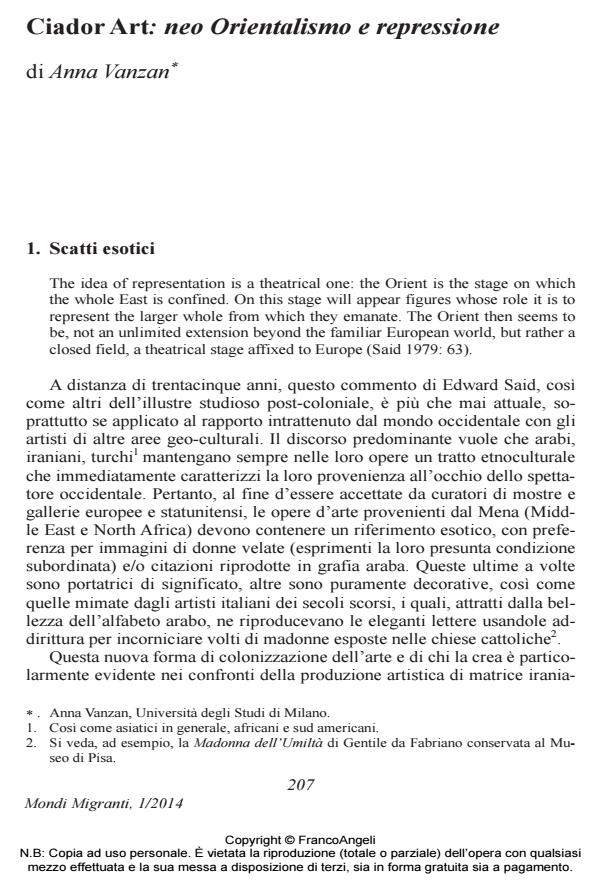Ciador Art: neo-Orientalism and repression
Journal title MONDI MIGRANTI
Author/s Anna Vanzan
Publishing Year 2014 Issue 2014/1
Language Italian Pages 14 P. 207-220 File size 106 KB
DOI 10.3280/MM2014-001012
DOI is like a bar code for intellectual property: to have more infomation
click here
Below, you can see the article first page
If you want to buy this article in PDF format, you can do it, following the instructions to buy download credits

FrancoAngeli is member of Publishers International Linking Association, Inc (PILA), a not-for-profit association which run the CrossRef service enabling links to and from online scholarly content.
The contemporary Iranian artists have long been very popular in Occident, where they were initially introduced by the performance of Shirin Neshat, their compatriot self-exiled in the United States and made famous thanks to his photos of women veiled and covered in Persian-Arabic characters . This aspect of ' exotic ' , however, sharply criticized in Iran, where this current neooriental is ciador is branded as art. It is the absolute protagonist of the research by critics, gallery owners and exhibition organizers in Europe, United States and Gulf countries (the latter real engine promotion of Iranian art abroad ). It offers space to artists who express themselves only through coordinates ethnically recognizable; and penalizing, in this way, those who want to use more universal language without necessarily resorting to veiled women, Arab- Persian calligraphy, or images that confirm the stereotypes rooted in the West compared to the company of Iran, especially with regard to its female segment .The article explores the limits of gender and ethnic markets within which compel the western of which is successful contemporary art Persian, working, in fact, a real cultural colonization .
Keywords: Contemporary Persian art; ciador art, neo-Orientalism; veiled women
Anna Vanzan, Ciador Art: neo Orientalismo e repressione in "MONDI MIGRANTI" 1/2014, pp 207-220, DOI: 10.3280/MM2014-001012